2021 DEFCON qualification
rick walkthrough
03 May 2021TL; DR
- Convert packet data to symbol tree
- Identify the correspondence between the values of nodes and logic gates
- Transform symbol tree into logic expression
- Solve the expression with Z3
Introduction
This challenge takes the form of a game. Push the lever correctly to open the door and go to the next level.
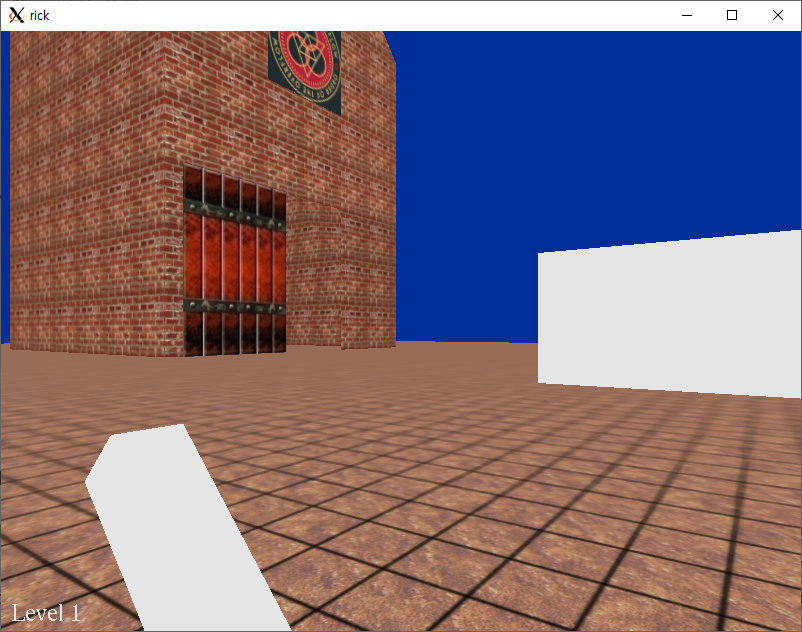
From level 11, the problem becomes hardly solvable for a human within the time limit. So what players have to do is reveal the problem information from server-side packets and write a script to solve problems automatically.
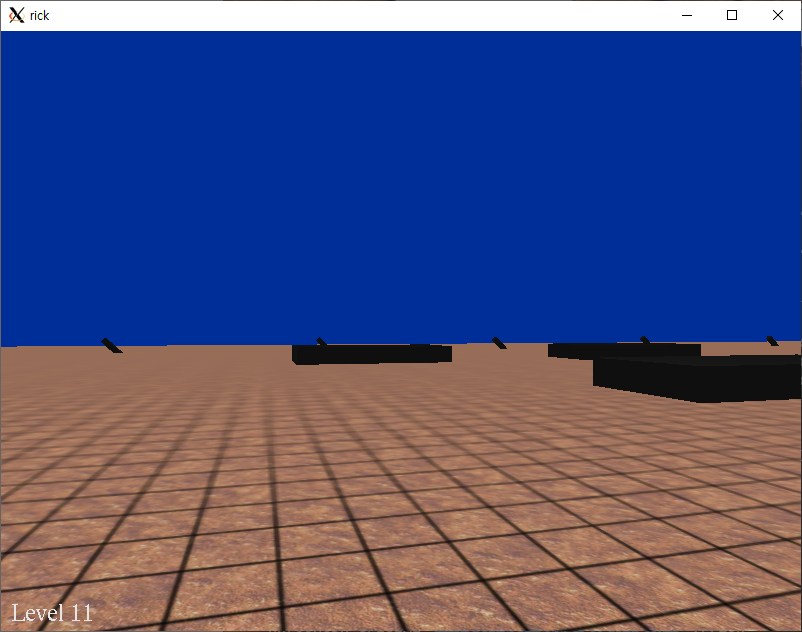
Play the Game
Before analyzing rick statically, I played it several times to understand the rules of the game.
These are what I learned:
- There is a time limit.
- Pushing every lever is not a solution.
- Up to level 10, the problem is always the same.
- From level 11, the difficulty of problems rises drastically.
Collect the Packets
Server-side
I collected the packets from rick.challenges.ooo:4343 during the game and tried to find some pattern.
This is the TCP payload sent from the server when starting level 1.

And this is from level 2.

Comparing packets of level 1 to 10, I can assume that packets sent from the server would have the following structure.

Also, I noticed that data[n] is always different in every run-time, even at the same level. Since the problems of lower levels never change, I concluded that data[n] is somehow encoded.
Client-side
I collected the packets sent by rick. It’s relatively shorter than the server’s.
These are the TCP payload when clearing the level 1 and 2. I cannot find any information from it.


Read the Binary
To figure out the protocol between the client and the server, I read the rick.
0x7C69: Receive num of data
On address 0x7c69, there is a do-while loop receiving 4-bytes from the server and saving it into num_of_data.
do
{
if ( recv(a1->fd, num_of_data, 1uLL, 0) != 1 || size == 0x4F4B )
{
std::__ostream_insert<char,std::char_traits<char>>(std::cerr, "disconnected", 12LL);
v31 = *(std::cerr[0] - 24LL);
v32 = *(&std::cerr[30] + v31);
if ( !v32 )
std::__throw_bad_cast();
if ( v32[56] )
{
v33 = v32[67];
}
else
{
std::ctype<char>::_M_widen_init(*(&std::cerr[30] + v31));
v33 = 10;
v65 = *(*v32 + 48LL);
if ( v65 != std::ctype<char>::do_widen )
v33 = (v65)(v32, 10LL, a2, a3, a4, a5);
}
v34 = std::ostream::put(std::cerr, v33);
std::ostream::flush(v34);
a1->byte39 = 0;
return __readfsqword(0x28u) ^ v95;
}
num_of_data = (num_of_data + 1);
}
while ( &v95 != num_of_data );
0x7CC5: Receive data
Then it receives 4 * num_of_data into a1->data
v9 = 4 * num_of_data;
data = malloc((4 * num_of_data));
fd = a1->fd;
a1->data = data;
if ( read_fd(fd, data, v9) == -1 ) // read_data
goto LABEL_54;
0x7D58: Decode data - logic gate
data[0] is divided by 10, and the remainder is saved into gate.
data = a1->data;
v16 = v14;
value = data[0];
v18 = v14 + 7;
a1->qword28 = v14;
memset(v14, 0, 0x68uLL);
v14[9] = v14 + 7;
v14[3] = v14 + 1;
v14[4] = v14 + 1;
v14[10] = v14 + 7;
v80 = v14 + 1;
gate = value % 0xA;
0x825D: Decode data - children
Call parse_data in n(data[1]&f) times.
if ( gate && (n = LOBYTE(data[1]), LOBYTE(data[1])) )
{
cnt = 0;
p_qword18 = &v89->qword18;
v58 = 8;
do
{
while ( 1 )
{
v59 = parse_data(v16, (data + v58), 1, &v89);
v60 = *(v56 + 32);
v90 = v59;
if ( v60 == *(v56 + 40) )
break;
*v60 = v59;
v58 += v89;
++cnt;
*(v56 + 32) = v60 + 8;
if ( n == cnt )
goto LABEL_74;
}
++cnt;
sub_71E0(p_qword18, v60, &v90);
v58 += v89;
}
while ( n != cnt );
LABEL_74:
v16[12] = v56;
}
0x77D0: parse_data
The code of parse_data is quite similar with above routines. Calculate gate with data[0] % 0xA,
value = data[0];
v46[1] = __readfsqword(0x28u);
gate = value % 0xA;
and call parse_data recursively in data[1] & 0xf times.
num_of_children_low = LOBYTE(data[1]);
if ( LOBYTE(data[1]) )
{
v29 = a3 + 1;
v30 = 0;
p_qword18 = &v45->qword18;
do
{
while ( 1 )
{
v31 = parse_data(a1, (data + v28), v29, &v45);
qword20 = v27->qword20;
v46[0] = &v31->data;
if ( qword20 == v27->qword28 )
break;
*qword20 = v31;
v28 += v45;
++v30;
v27->qword20 = qword20 + 8;
if ( num_of_children_low == v30 )
goto LABEL_39;
}
++v30;
sub_71E0(p_qword18, qword20, v46);
v28 += v45;
}
while ( num_of_children_low != v30 );
}
This coding pattern seems recursive tree traversal algorithms.
Reveal the structure of a packet
Based on the information analyzed, I wrote the packet parsing script.
from pwn import *
from anytree import Node, RenderTree, PreOrderIter
p = remote("rick.challenges.ooo", 4343)
def encrypt(pt):
global key
return bytes([pt[i] ^ key[i % 4] for i in range(len(pt))])
def parse_tree(data, parent=None):
global nodes
val = data[0] % 0xa
gate = str(val)
cur_node = Node(gate, parent=parent)
nodes.append(cur_node)
if val == 0:
return 1
child_n = data[1] & 0xf
subtree_sz = 0
for i in range(child_n):
subtree_sz += parse_tree(data[2+subtree_sz:], cur_node)
return subtree_sz+2
answers = [b'1', b'01', b'11', b'0001', b'1111',
b'10', b'11', b'10', b'1111', b'0101', b'0101']
# level 2 => 01, 10, 11
# level 6 => 01, 10, 11
# level 8 => 01, 10
# level 9 => 0101, 0110, 0111, 1001, 1010, 1011, 1111
# level 10 => 0101, 1010, 1001
key = b'RICK'
p.recvuntil('RICK')
level = 1
for level in range(1, 12):
print(f"====LEVEL {level}====")
sz = u32(p.recvn(4))
challs = []
nodes = []
for i in range(sz):
data = u32(p.recvn(4))
challs.append(data)
parse_tree(challs)
for pre, fill, node in RenderTree(nodes[0]):
print(f"{pre}{node.name}")
p.sendline(encrypt(answers[level-1]))
p.interactive()
$ python3 parse.py
====LEVEL 1====
2
└── 0
====LEVEL 2====
3
├── 0
└── 0
====LEVEL 3====
2
├── 0
└── 0
====LEVEL 4====
3
├── 0
├── 0
├── 0
└── 0
...
====LEVEL 11====
6
├── 2
│ ├── 8
│ │ ├── 0
│ │ ├── 0
│ │ └── 0
│ └── 1
│ └── 0
└── 1
└── 2
├── 0
├── 0
├── 0
└── 0
It works well.
Figure out the meaning of node values
I played the game again to infer the relationship between parsed information and the problem of each stage. First, I noticed that the number of 0s is the same as the number of levers. So I assume that 0 represents user input.
Then I wrote down all correct answers, looked at the tree structure, and figured out the meaning of the other values.
Level 2
3 represents or gate.
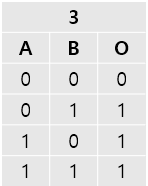
Level 3
2 represents and gate.
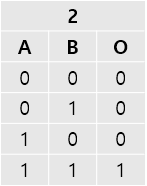
Level 10
4 represents xor gate.
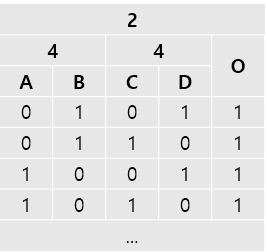
Level 8
1 represents not gate.
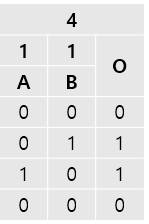
It looks pretty inefficient to deduce the rest of the gate by playing games. So I went back to analyze rick. Thankfully, our teammate okas832 found and informed me of the code that handles the logic gates. The code is located at 0x8322. I analyzed the code and identifies the remaining gates.
Reveal the problem from packets
I wrote the python script, and it successfully reveals the problem information from the packet. The entire code is at the end of the article.
====LEVEL 1====
And
└── I
====LEVEL 2====
Or
├── I
└── I
====LEVEL 3====
And
├── I
└── I
====LEVEL 4====
Or
├── I
├── I
├── I
└── I
...
====LEVEL 11====
XorM
├── Not
│ └── I
├── Or
│ ├── I
│ └── I
└── Unk1
├── I
├── I
├── I
└── I
Solve the problem with Z3
So the problem is equivalent to solving a logical expression. I decided to solve it with Z3. Here is the full solver script(fixed by okas832).
from pwn import *
from z3 import *
from anytree import Node, RenderTree, PreOrderIter
p = remote("rick.challenges.ooo", 4343)
logic_table = {0: "I", 1: "Not", 2: "And",
3: "Or", 4: "XorM", 5: "Nand", 6: "Nor", 7: "Seq", 8: "Unk1", 9: "Unk2"}
def encrypt(pt):
global key
return bytes([pt[i] ^ key[i % 4] for i in range(len(pt))])
def XorM(*args):
# multiple input XOR
res = Xor(args[0], args[1])
for var in args[2:]:
res = Xor(res, var)
return res
def Nand(*args):
return Not(And(args))
def Nor(*args):
return Not(Or(args))
def Seq(*args):
if len(args) == 1:
return Not(Xor(args[0], args[0]))
else:
tmps = []
for i in range(len(args)-1):
tmps.append(Xor(args[i], args[i+1]))
return And(*tmps)
def Unk1(*args):
return Nor(args[0], args[len(args)-1])
def Unk2(*args):
return And(args[0], args[len(args)-1])
def parse_tree(data, parent=None):
global nodes
val = data[0] % 0xa
try:
gate = logic_table[val]
except:
gate = str(val)
cur_node = Node(gate, parent=parent)
nodes.append(cur_node)
if val == 0:
return 1
child_n = data[1] & 0xf
subtree_sz = 0
for i in range(child_n):
subtree_sz += parse_tree(data[2+subtree_sz:], cur_node)
return subtree_sz+2
def preorder(root, ans=None):
if not root:
return ans
if ans == None:
ans = []
ans.append(root.name)
if len(root.children) != 0:
ans.append('(')
for child in root.children:
preorder(child, ans)
ans.append('), ')
return ans
def solve(root):
answer = bytes()
expr = ''
vars = []
var_cnt = 0
ordered_syms = preorder(root)
for sym in ordered_syms:
if sym == 'I':
var_name = 'vars['+str(var_cnt)+']'
vars.append(Bool(var_name))
var_cnt += 1
expr += var_name + ', '
elif sym != None:
expr += sym
print(f"Expression: {expr}")
s = Solver()
s.add(eval(expr))
if s.check() == sat:
model = s.model()
print(model)
for i in vars:
answer += str(int(bool(model[i]))).encode()
return answer
answers = [b'1', b'01', b'11', b'0001', b'1111',
b'10', b'11', b'10', b'1111', b'0101', b'0101']
# level 2 => 01, 10, 11
# level 6 => 01, 10, 11
# level 8 => 01, 10
# level 9 => 0101, 0110, 0111, 1001, 1010, 1011, 1111
# level 10 => 0101, 1010, 1001
key = b'RICK'
p.recvuntil('RICK')
level = 1
while 1:
print(f"====LEVEL {level}====")
sz = u32(p.recvn(4))
challs = []
nodes = []
for i in range(sz):
data = u32(p.recvn(4))
challs.append(data)
parse_tree(challs)
# for pre, fill, node in RenderTree(nodes[0]):
# print(f"{pre}{node.name}")
answer = solve(nodes[0])
print(f"Answer: {answer.decode()}")
p.sendline(encrypt(answer))
level += 1
if level == 101:
break
key = p.recvn(4)
sz = u32(p.recvn(4))
dat = p.recvn(sz)
print(encrypt(dat))
p.interactive()
$ python3 solve.py
====LEVEL 1====
Expression: And(vars[0], ),
[vars[0] = True]
Answer: 1
====LEVEL 2====
Expression: Or(vars[0], vars[1], ),
[vars[1] = False, vars[0] = True]
Answer: 10
====LEVEL 3====
Expression: And(vars[0], vars[1], ),
[vars[1] = True, vars[0] = True]
Answer: 11
...
b'OOO{never_gooonna_give_yooou_up_but_Im_gooonna_give_yooou_this_flag}\n'